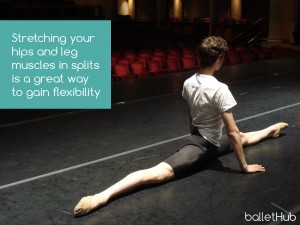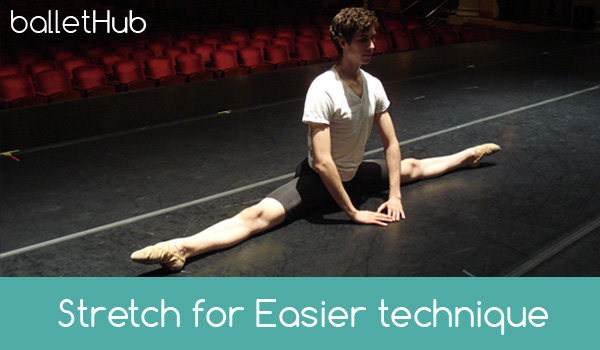Ballet requires the dancer to be in specific positions, shapes and move in ways that requires above average flexibility and strength. And almost always, unless for instance a contemporary choreographer asks for a movement to look otherwise, it all must also be done to look somewhat effortless.
Part of achieving the effortless look deals a lot with the individual dancer’s flexibility. Since there is less resistance, and tightness in your muscles, to get from one position to another, the step is essentially easier and causes less fatigue on your muscles. You don’t need to be stretchy like Gumbie or a rubber band to have your ballet technique benefit from stretching.
effortless look deals a lot with the individual dancer’s flexibility. Since there is less resistance, and tightness in your muscles, to get from one position to another, the step is essentially easier and causes less fatigue on your muscles. You don’t need to be stretchy like Gumbie or a rubber band to have your ballet technique benefit from stretching.
Stretching should be a daily training/ballet routine, whether you’re a student or a professional. Allowing yourself enough time to properly stretch is equally important so the muscle group you are targeting can get the maximum benefit. Here are some tips to get into a good routine of stretching.
- Make sure you arrive early enough before class so you can properly stretch.
- Once class is over, try to allow yourself 5-10 minutes to stretch and relax your muscles.
- Take ample time in each stretching position so you aren’t rushed and can receive the full benefit.
- Over time and when you feel you’re ready, try to increase the degree of the stretch.
- Be sure to stretch safely by easing into each stretch position as opposed to trying to get the maximum stretch right away.
 By stretching regularly, and properly, not only will you gain flexibility, but you will also find that your technique will improve and certain positions will become easier to attain.
By stretching regularly, and properly, not only will you gain flexibility, but you will also find that your technique will improve and certain positions will become easier to attain.
Don’t Go Overboard!
While stretching is great and has a huge amount of benefits(even for non-dancers), remember to always ease into stretches and only increase the degree of stretching when you feel comfortable! Your body will tell you where it feels a “good stretch”. If you go overboard, you risk injury that could put you out for several weeks or months.

